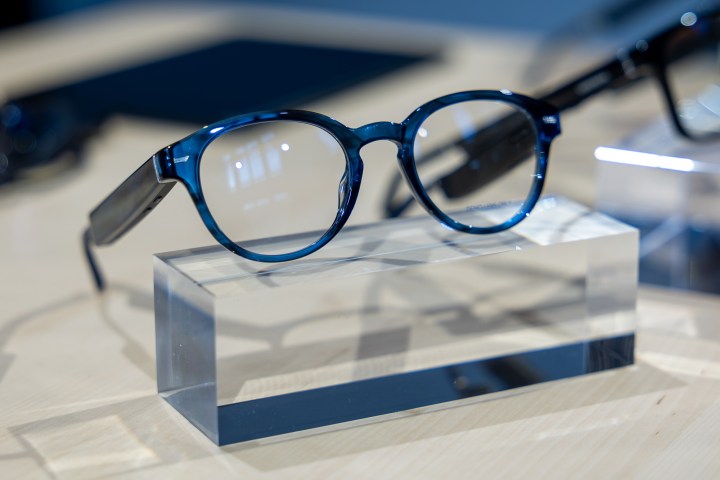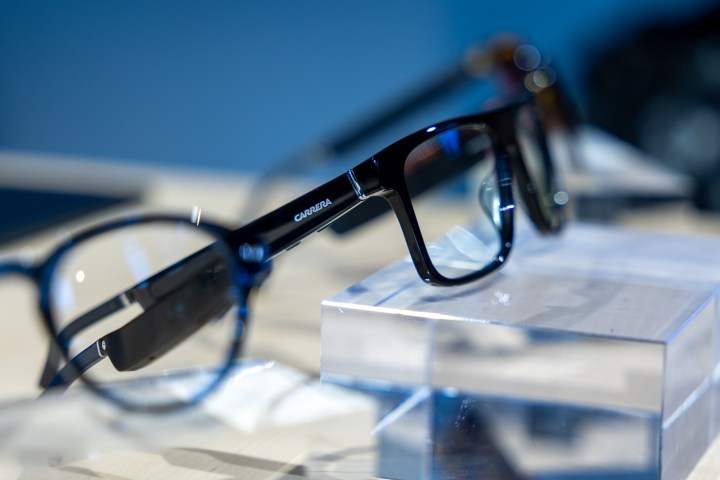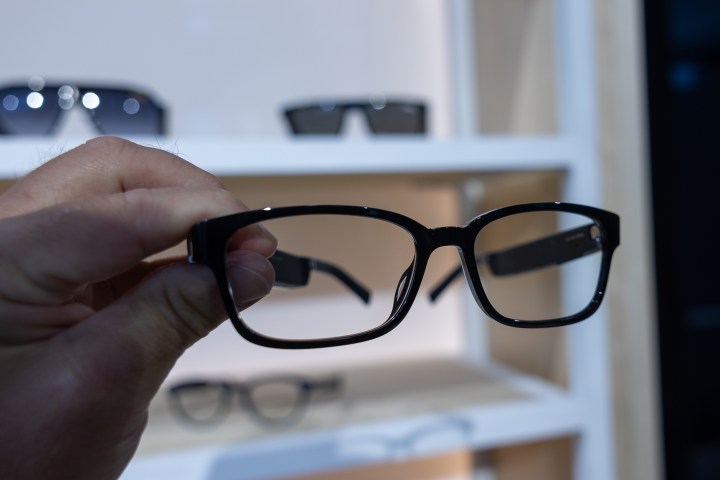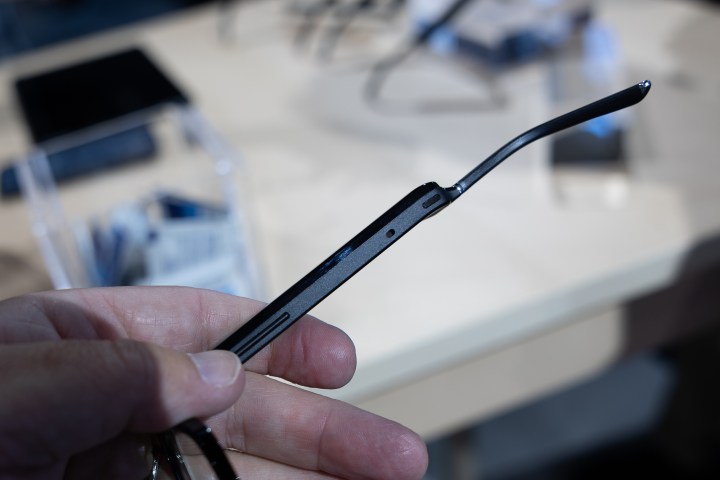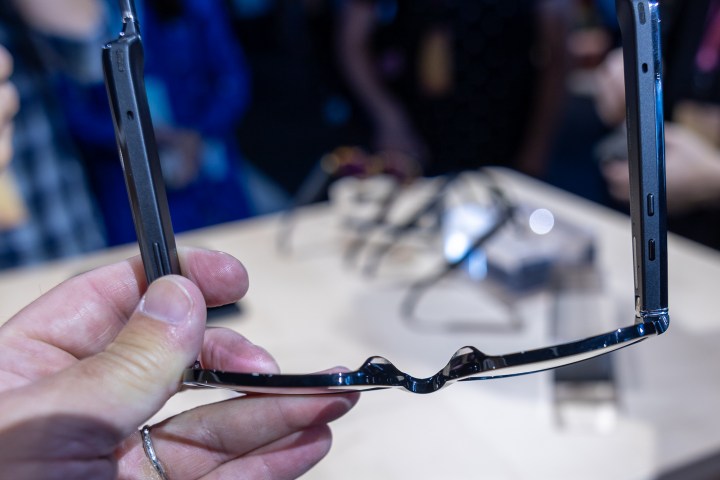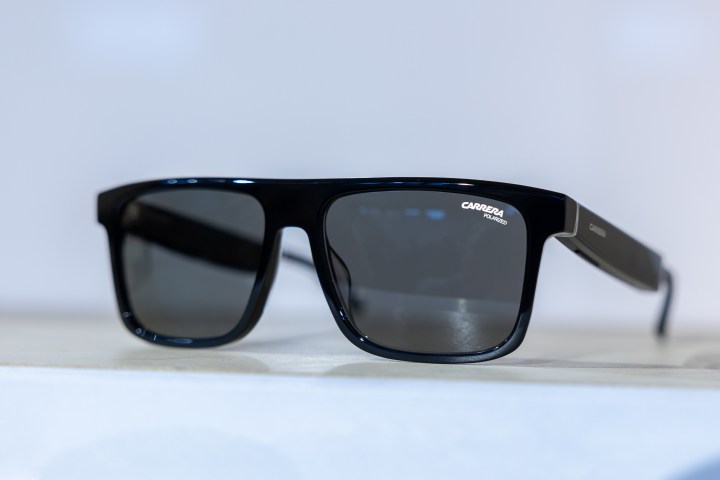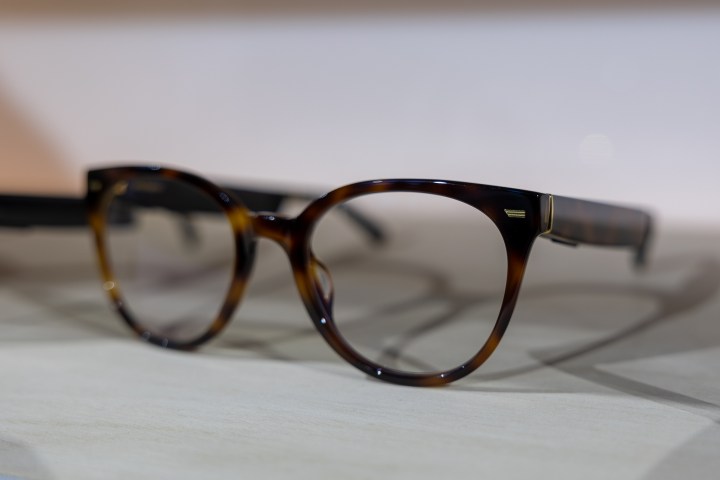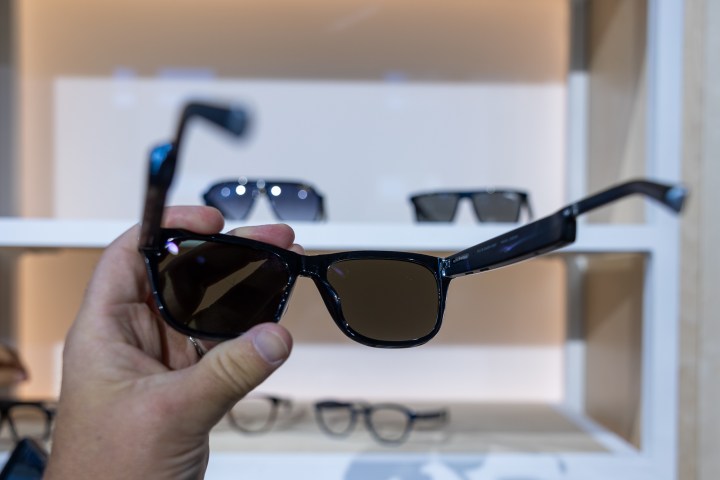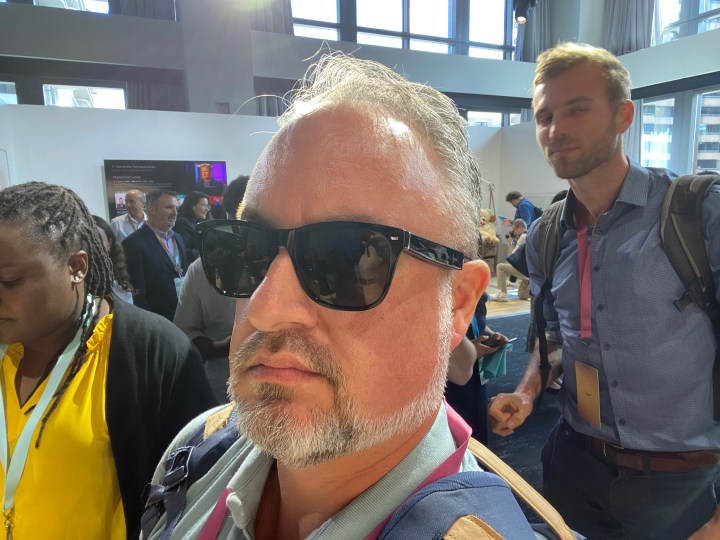
“The thing is, they all look like regular glasses.”
That’s what my compatriot in the packed demo area at Amazon’s fall devices event said as we looked over the range of eyewear that comprises the new Amazon Echo Frames. For the most part, they do look exactly like the prescription (and nonprescription) glasses we’re all used to. Style-wise, you’d find these at any optician’s shop. That was true, too, for the sunglasses.
And let’s be clear: These Carrera Smart Glasses from Carrera Eyewear, which are separate from the Echo Frames, look pretty good themselves.
Everything looks perfectly normal from the front, anyway. Take ’em off and give ’em a better look, and you see where the work is being done. Tucked into the arms are the guts. The batteries and PCBs and buttons — and, most important, the speakers. Everything that makes the Echo Frames more than just … frames.
Amazon says the new ones are 15% slimmer than the old ones. But hand the Echo Frames to anyone who doesn’t already know what they are and they’ll definitely have questions. “Why so thick?” chief among them.
But that’s not to say they’re uncomfortable. Anything but, really. Never mind that nobody’s doing any sort of custom sizing in a demo situation — the several styles of Echo Frames I tried on felt just fine. (I wear contacts most of the time, but do put my glasses on at least once a week.)
That’s the first hurdle. If they were uncomfortable, it’d be a nonstarter. So now it was time for the fun stuff.
Alexa is Alexa. That hasn’t changed, though the voice assistant is soon to inherit the powers of generative AI. In the Frames, Alexa is just that much closer to your ears. And there’s something definitively different knowing the voice assistant is basically living on your face. Weird? Maybe a little, especially if you trigger Alexa hands-free. But there’s no denying that it’s convenient.
You can play music on the Echo Frames, so long as you’re not expecting it to sound great. It’s not a horrible experience (though Doja Cat isn’t really my cup of tea), but there’s just no sense of bass coming from the tiny drivers. It’s almost as bad as older bone-conducting headphones. You’re at first amazed at how you’re listening, but you’ll quickly want something better. It’ll be fine for phone calls or podcasts. But for music, I want something better.
Then there’s the fact that these are still tiny computers tucked into tiny eyeglasses. There’s only so much battery you can build in here, and so you’re going to have to charge on the regular. Amazon claims six hours of use.
Smart glasses aren’t yet for everyone. Maybe they never will be (though I wouldn’t short Amazon or anyone on that one). But these second-gen Echo Frames get us that much closer to that reality.
